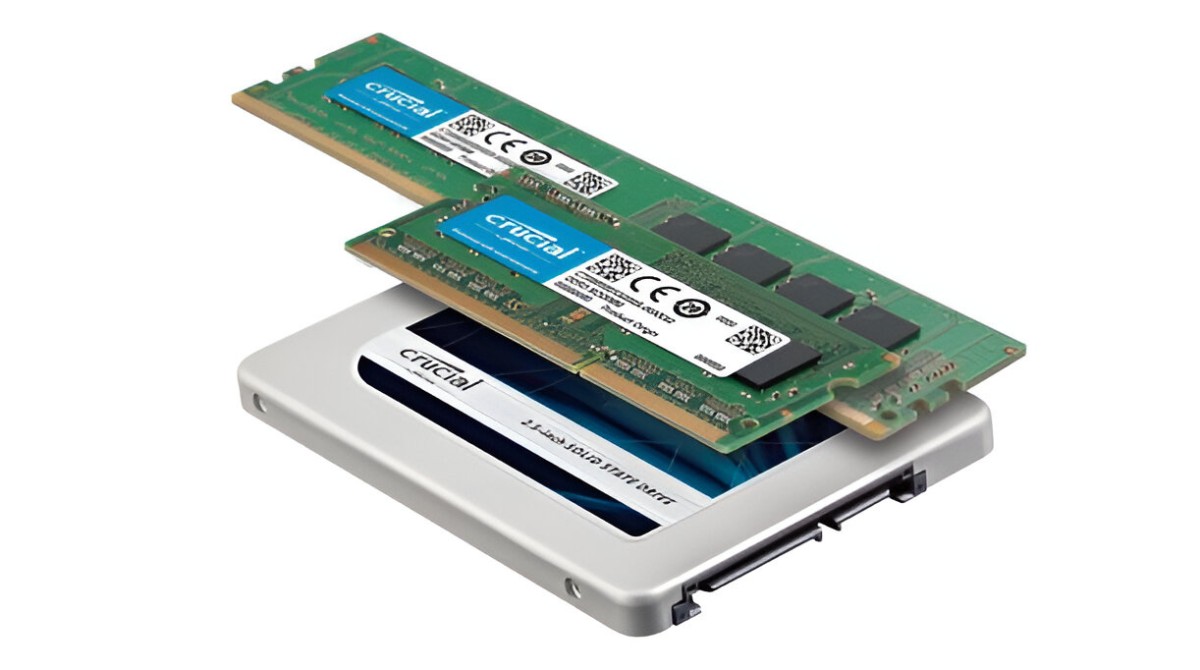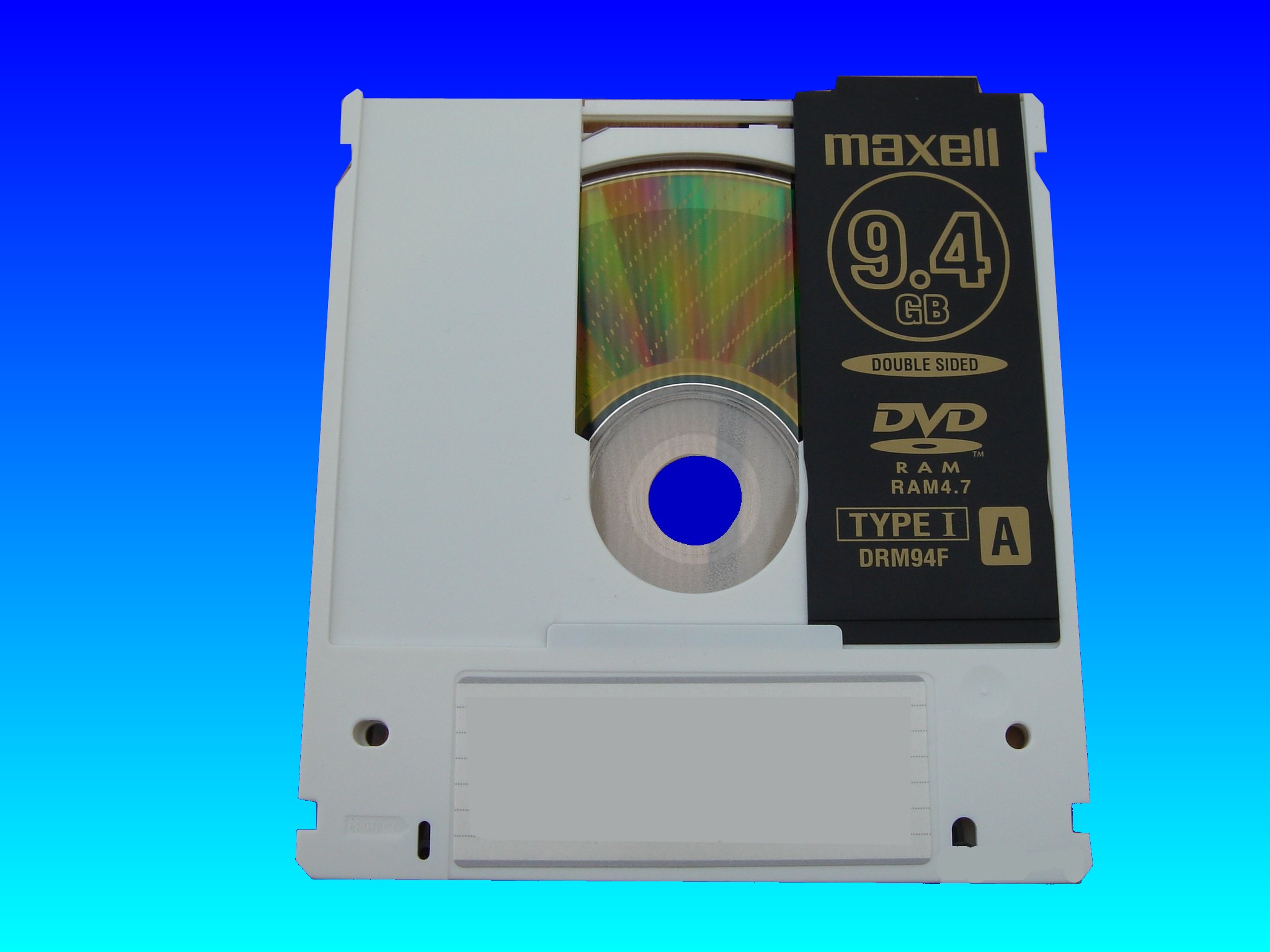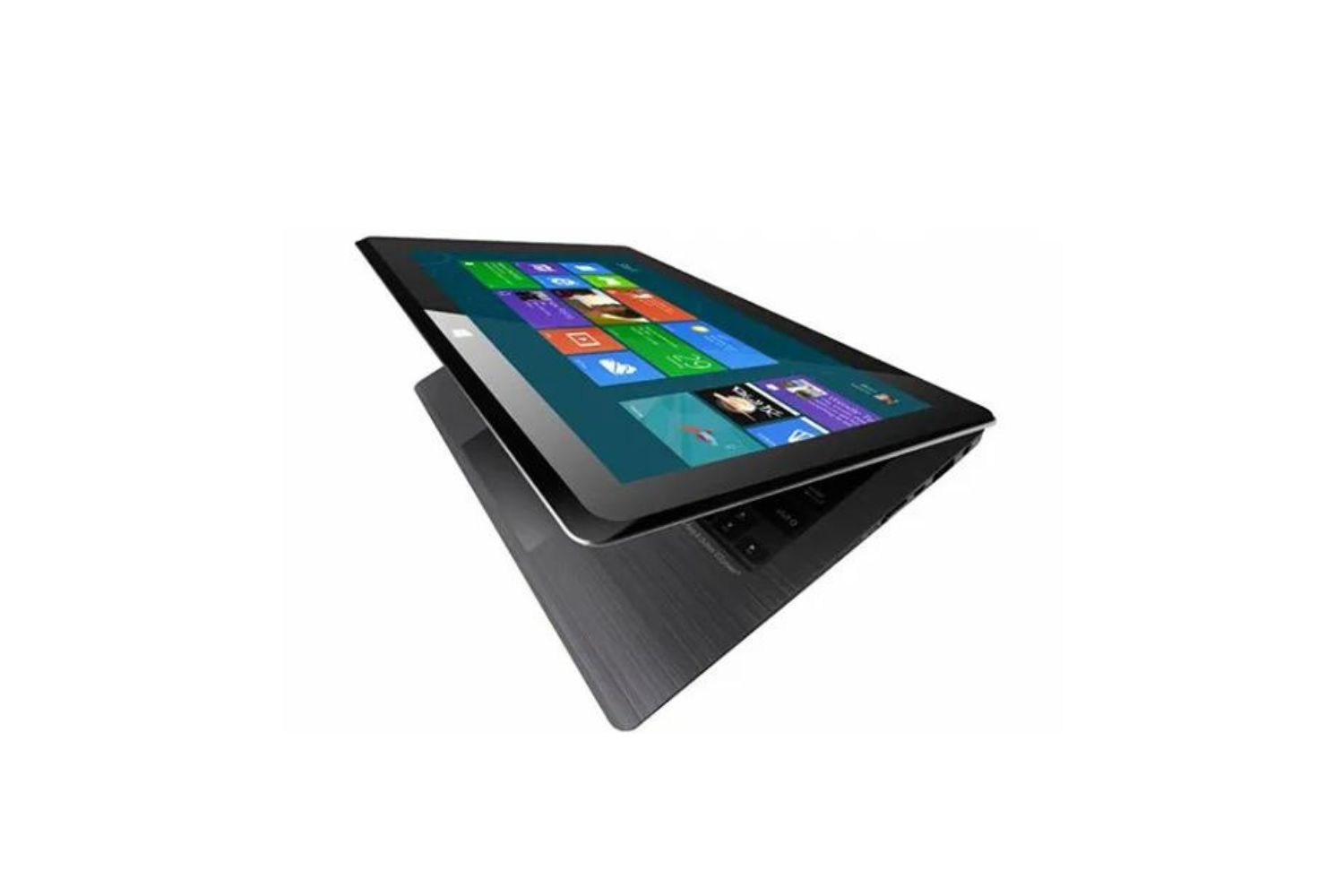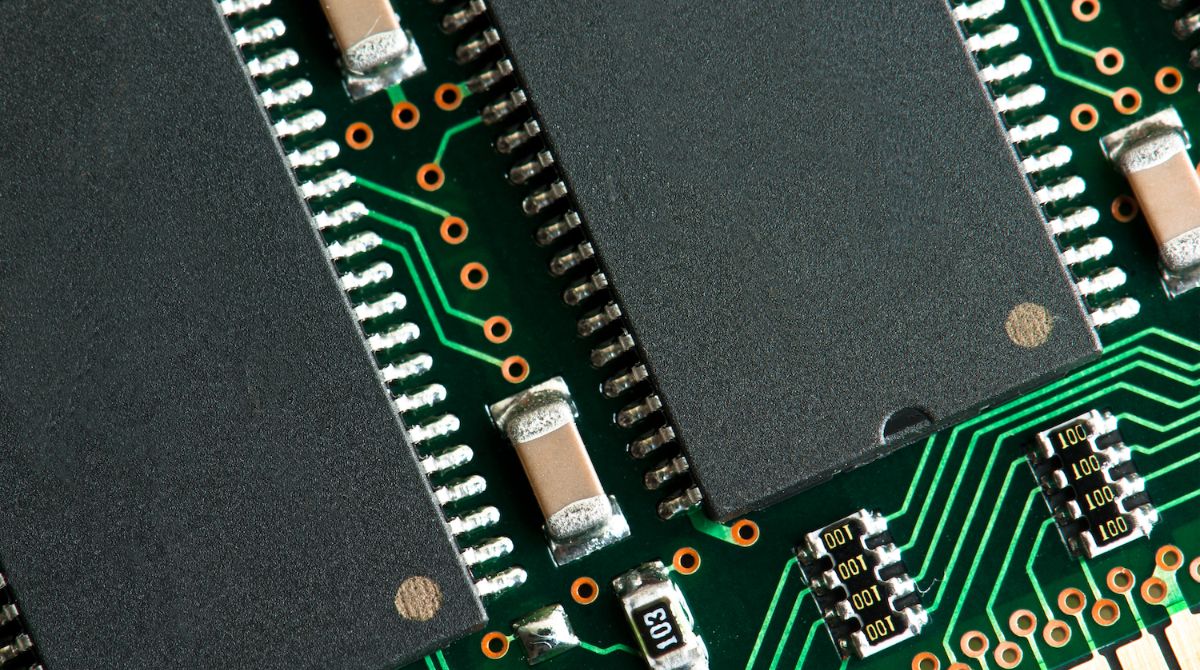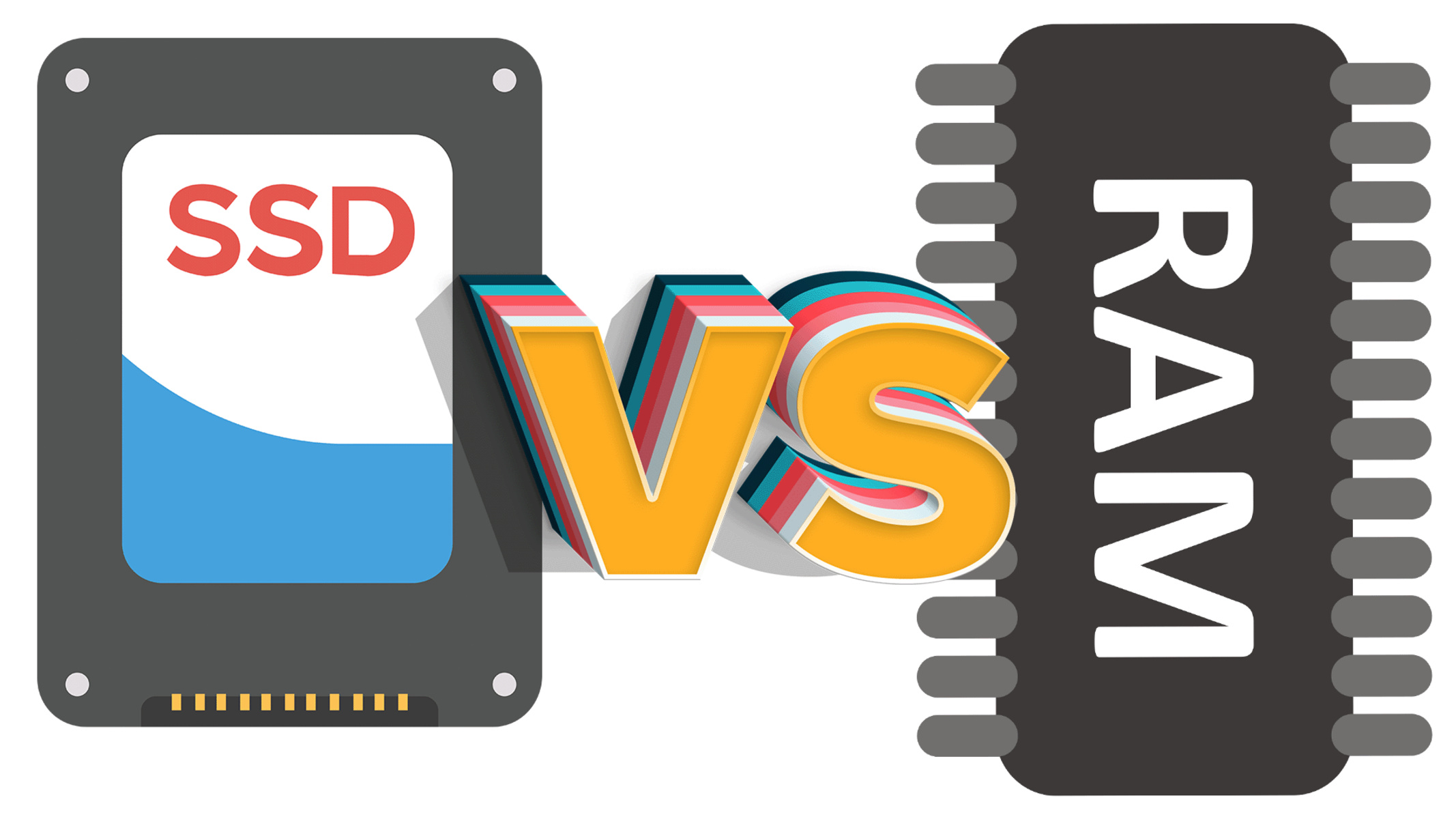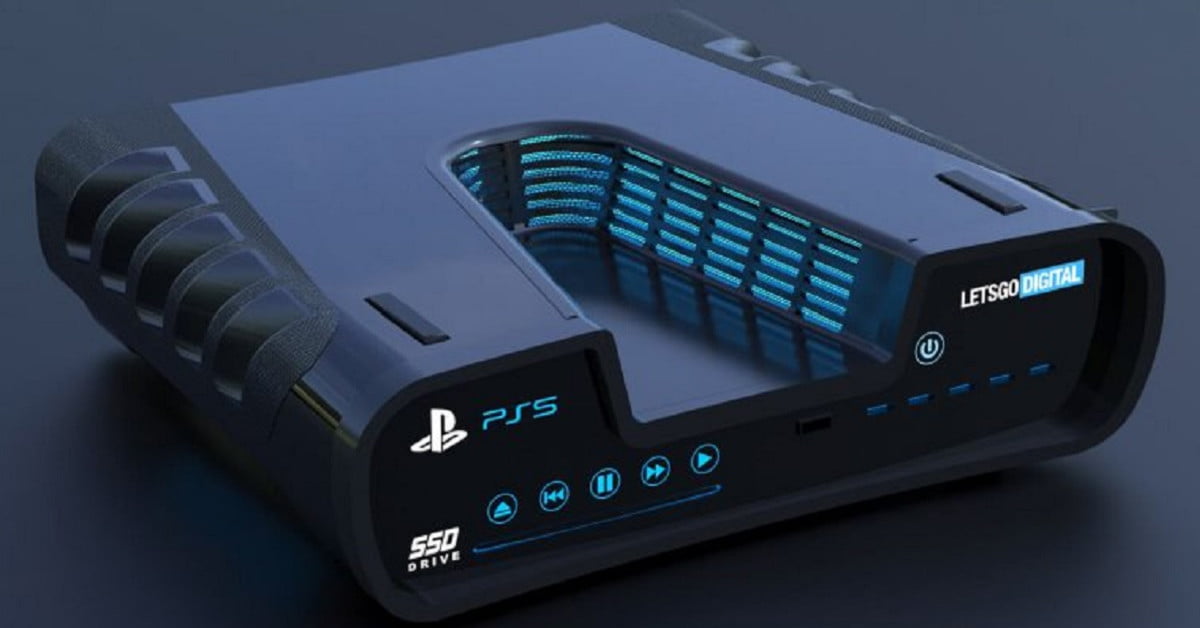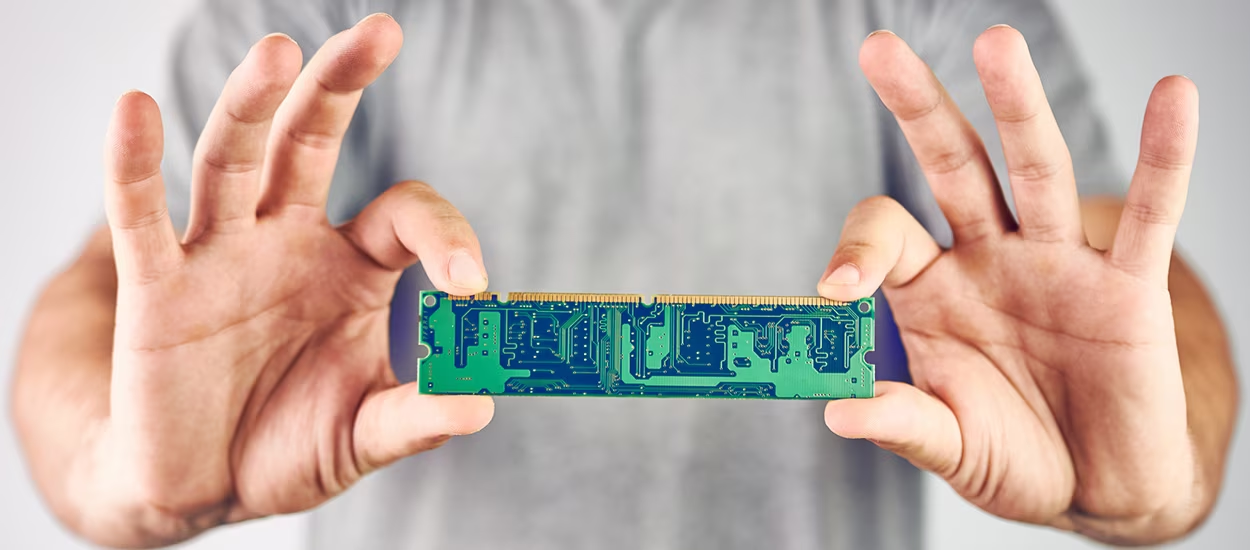Introduction
Welcome to the world of computing where we encounter two crucial components – RAM and storage. These two terms are often used interchangeably, but they serve different purposes in a computer system. Understanding the difference between RAM and storage is essential for anyone seeking to gain a deeper understanding of how computers work and how to optimize their performance.
RAM, which stands for Random Access Memory, and storage are both critical components of a computer. However, their functions and characteristics are distinct. RAM is a type of computer memory that stores data temporarily while the computer is on. On the other hand, storage refers to the permanent storage of data, files, and programs.
In this article, we will explore the definitions, functions, and types of RAM and storage. Additionally, we will compare and contrast the differences between these two components, helping you understand their significance in the context of computer systems.
So without further ado, let’s dive into the fascinating world of RAM and storage to unravel their mysteries and grasp how they work together harmoniously to power our digital lives.
Definition of RAM
RAM, short for Random Access Memory, is a crucial component of a computer that provides fast and temporary storage for data and instructions that are being actively used by the system. It is the working memory of a computer and plays a vital role in the overall performance and responsiveness of the system.
RAM can be visualized as a temporary workspace or a scratchpad where the computer stores and retrieves data that is actively being processed by the CPU (Central Processing Unit). Unlike storage, which retains data even when the computer is powered off, RAM is volatile memory, meaning its contents are lost when the computer is turned off or reset.
At its core, RAM is made up of memory cells that can be accessed randomly, hence the name Random Access Memory. These cells are organized in a grid-like structure, with each cell capable of storing a certain amount of data. Each cell has an address, allowing the computer to quickly locate and retrieve the data it needs.
RAM acts as a bridge between the CPU and the storage device, providing a much faster and efficient way to access data compared to the relatively slower storage mediums such as hard drives or solid-state drives (SSDs). When a program or application is launched, it is loaded into RAM, allowing the CPU to quickly access the necessary instructions and data without having to rely on the comparatively slower storage devices.
Essentially, RAM serves as a temporary storage space for data that is actively being used by the computer. It is responsible for holding the operating system, programs, and data that are currently in use, enabling the CPU to quickly retrieve and manipulate the information, resulting in smooth and efficient operation.
Function of RAM
The primary function of RAM (Random Access Memory) is to provide a fast and temporary storage space for data and instructions that are actively being used by the computer’s CPU (Central Processing Unit). RAM allows the CPU to quickly access and retrieve data, which in turn enhances the overall performance and responsiveness of the system.
One of the key functions of RAM is to hold the operating system, such as Windows or macOS, and the currently running programs. When you open a program or application, it is loaded into RAM, allowing the CPU to swiftly access the necessary instructions and data. This enables faster program execution and smoother multitasking, as the CPU can rapidly switch between different programs stored in RAM.
Another crucial function of RAM is to serve as a buffer for data transfers between the CPU and storage devices. When data is read from or written to the storage drive, it is temporarily stored in RAM before being processed by the CPU. This helps to bridge the speed gap between the relatively slow storage devices, such as hard drives or SSDs (Solid-State Drives), and the fast-paced operations of the CPU.
RAM is also instrumental in caching frequently accessed data. Frequently used instructions, files, and data are stored in the RAM for quicker retrieval, reducing the need to fetch them repeatedly from the storage drive. This caching mechanism significantly improves system performance and reduces the overall load on the storage devices.
Furthermore, RAM plays a crucial role in gaming and graphics-intensive applications. Gaming requires quick loading times and smooth rendering of high-resolution graphics. By storing game files and textures in RAM, the CPU can access them rapidly, resulting in seamless gameplay and immersive visual experiences.
It’s worth noting that the amount of RAM you have installed on your computer can directly impact its overall performance. Insufficient RAM can lead to slow system responsiveness, frequent delays, and even crashes, especially when running memory-intensive applications or multitasking with multiple programs simultaneously. Therefore, having an adequate amount of RAM is essential to ensure smooth and efficient operation of your computer.
Types of RAM
There are several types of RAM (Random Access Memory) available, each with its own characteristics and capabilities. Let’s explore the most common types of RAM:
- DRAM (Dynamic Random Access Memory): DRAM is the most prevalent type of RAM used in modern computers. It stores data in individual memory cells consisting of a capacitor and a transistor. However, the stored data is volatile and requires constant refreshing to maintain its integrity. Despite being slower and less power-efficient than other types, DRAM offers a higher density and capacity at a lower cost, making it ideal for general computing needs.
- SRAM (Static Random Access Memory): Unlike DRAM, SRAM does not require constant refreshing to retain data. It uses flip-flop circuitry to store each bit of data, providing faster access times and lower power consumption. However, SRAM is more expensive and less dense than DRAM, making it suitable for cache memory and specialized applications that demand high-speed data access, such as CPUs and GPU buffers.
- SDRAM (Synchronous Dynamic Random Access Memory): SDRAM is an improved version of DRAM that synchronizes with the computer’s bus speed. It operates at higher speeds and offers improved performance compared to conventional DRAM. SDRAM is commonly used as the main memory in desktop computers, laptops, and servers.
- DDR SDRAM (Double Data Rate Synchronous Dynamic Random Access Memory): DDR SDRAM, often referred to as DDR, is a type of SDRAM that provides faster data transfer rates by utilizing both the rising and falling edges of the clock signal. It has evolved through several generations, including DDR2, DDR3, and DDR4, each offering increased bandwidth and improved power efficiency. DDR memory modules are widely used in modern computer systems, catering to various computing needs, from consumer devices to high-performance servers.
- LPDDR (Low Power DDR): LPDDR is a type of DDR SDRAM specifically designed for low-power consumption in mobile devices such as smartphones, tablets, and portable gaming consoles. It offers reduced power consumption while providing ample memory bandwidth for smooth multitasking and multimedia experiences on battery-powered devices.
These are the primary types of RAM commonly encountered in computers and other electronic devices. Each type serves specific needs and comes with its own advantages and limitations. When upgrading or purchasing RAM, it is crucial to choose the appropriate type that aligns with your device’s requirements and performance demands.
Definition of Storage
Storage refers to the permanent retention of data, files, programs, and other digital information on a computer or electronic device. Unlike RAM (Random Access Memory), storage is non-volatile, meaning it retains data even when the device is powered off or reset.
Storage serves as a long-term repository for data that is not actively being processed or used by the computer’s CPU. It allows users to store and access a wide range of digital content, including documents, photos, videos, music, and software installations.
There are various types of storage media available, each offering different storage capacities, access speeds, and physical forms. Traditional storage devices include hard disk drives (HDDs) and solid-state drives (SSDs), while newer options include cloud storage services and network-attached storage (NAS).
Hard disk drives (HDDs) are mechanical storage devices that utilize rotating magnetic platters and read/write heads to store and retrieve data. HDDs offer large storage capacities at an affordable price point, making them suitable for storing vast amounts of data. However, they tend to be slower in terms of data access compared to other storage options.
Solid-state drives (SSDs) have gained popularity due to their significant advantages over HDDs in terms of speed, durability, and power efficiency. SSDs use flash memory technology to store data, resulting in faster data transfer speeds and quicker access times. While SSDs have a higher cost per gigabyte compared to HDDs, they are ideal for improving overall system performance and reducing load times for applications and files.
Cloud storage services have emerged as a popular storage solution, offering the ability to store data remotely on servers accessible via the internet. Cloud storage provides convenience, as users can access their files from any device with an internet connection. It also offers scalable storage options and data redundancy measures to ensure data integrity and availability.
Network-attached storage (NAS) is a dedicated storage device connected to a network, allowing multiple users to access and share data simultaneously. NAS provides centralized storage management, enabling efficient data sharing, backup, and remote access. It is commonly used in homes and small businesses as an affordable and scalable storage solution.
Overall, storage plays a vital role in preserving data for long-term use and ensuring its availability even after the computer or device is powered off. It provides the means to store, organize, and retrieve digital content efficiently, contributing to the seamless and convenient user experience in the digital world.
Function of Storage
The primary function of storage is to provide a means of permanent data retention on a computer or electronic device. Unlike RAM (Random Access Memory), which stores data temporarily while the device is powered on, storage is non-volatile and retains data even when the device is turned off or reset.
Storage serves several important functions that are crucial for day-to-day computing and data management:
- Data Retention: The most fundamental function of storage is to store and retain data over an extended period. It allows users to save various types of digital content, including documents, photos, videos, music, and software installations, ensuring their availability for future use.
- Data Organization: Storage enables users to organize their data systematically, facilitating efficient data management and retrieval. Folders, directories, and file systems help users categorize and locate specific files or information quickly.
- Data Backup and Recovery: Storage is essential for creating reliable backups of critical data. Regular backups protect against unforeseen events such as hardware failure, system crashes, or accidental file deletion. Storage devices offer the ability to restore backed-up data, ensuring business continuity and reducing the risk of data loss.
- Software and Operating System Installation: Storage provides the necessary space to store software applications and operating systems. When installing new software or updating the operating system, the installation files are stored on the storage device until they are executed and integrated into the system.
- Archiving and Long-Term Storage: Storage is used for archiving data that is no longer actively used but still needs to be retained. This includes historical records, legal documents, old projects, and other files that may need to be accessed or retrieved at a later date.
- Content Delivery and Media Streaming: With the rise of digital media consumption, storage plays a crucial role in delivering content and facilitating media streaming. High-capacity storage devices and cloud-based storage services enable users to store and access large media files such as movies, music, and streaming services.
Storage devices come in various forms, including hard disk drives (HDDs), solid-state drives (SSDs), cloud-based storage, and network-attached storage (NAS). Each type of storage device offers different advantages and capabilities to meet the diverse needs of users.
In summary, storage acts as a permanent repository for data, ensuring its retention, organization, and availability for future use. It plays a vital role in data management, backup, software installation, archiving, and media streaming, contributing to efficient and reliable computing experiences.
Types of Storage
There are several types of storage media available, each with its own characteristics and capabilities. Let’s explore the most common types of storage:
- Hard Disk Drives (HDDs): HDDs are mechanical storage devices that use spinning magnetic platters and read/write heads to store and retrieve data. They offer large storage capacities at a relatively lower cost per gigabyte compared to other storage options. HDDs are commonly used in computers, laptops, and servers where cost-effective storage solutions with high capacities are required. However, they are relatively slower in terms of data access and are susceptible to mechanical failures.
- Solid-State Drives (SSDs): SSDs have gained popularity in recent years due to their significant advantages over HDDs. They utilize flash memory technology to store data, which provides faster data transfer speeds, quicker access times, and improved durability. SSDs are more expensive than HDDs but offer higher performance, making them suitable for enhancing system responsiveness, reducing load times, and improving overall user experience.
- Cloud Storage: Cloud storage has emerged as a popular storage solution that allows users to store and access their data remotely through the internet. It involves storing data on servers maintained by cloud service providers. Cloud storage provides flexibility, scalability, and accessibility from any device with an internet connection. It offers convenience and data redundancy measures to ensure data integrity and availability.
- Network-Attached Storage (NAS): NAS is a dedicated storage device connected to a network, providing storage and file-sharing capabilities to multiple users simultaneously. NAS devices are equipped with their own operating systems and are connected to the network, typically through Ethernet. They offer centralized storage management, allowing users to store and access their data from various devices on the network, such as computers, smartphones, and smart TVs. NAS devices are commonly used in homes and small businesses for convenient and efficient data sharing and backup.
- Optical Storage: Optical storage media, such as CDs (Compact Discs), DVDs (Digital Versatile Discs), and Blu-ray discs, have been widely used for storing and distributing data, music, videos, and software. These discs use laser technology to read and write data onto their surfaces. Optical storage offers relatively lower storage capacities compared to HDDs and SSDs, but they are cost-effective for archiving and distributing content. However, with the rise of digital media and cloud storage, the use of optical media has declined in recent years.
- Flash Drives: Flash drives, also known as USB drives or thumb drives, are small portable storage devices that utilize flash memory technology. They offer a convenient and portable solution for storing and transferring data between devices. Flash drives are available in various capacities and are widely used for storing and transporting personal files, documents, and media. They provide plug-and-play functionality and are compatible with a wide range of devices with USB ports.
These are the primary types of storage media commonly used in computers and electronic devices. Each type offers different storage capacities, access speeds, and physical forms, allowing users to choose the most suitable option based on their needs and requirements.
Comparison between RAM and Storage
RAM (Random Access Memory) and storage are both essential components of a computer, but they have distinct roles and characteristics. Let’s compare RAM and storage based on several key factors:
- Function: RAM functions as temporary working memory for the computer. It holds data and instructions that the CPU is actively using, allowing for quick access and processing. Storage, on the other hand, is permanent and stores data for long-term retention, even when the computer is powered off.
- Type of Memory: RAM is volatile memory, meaning its contents are lost when the power is turned off. It provides fast access and retrieval of data while the computer is running. Storage, such as HDDs or SSDs, is non-volatile and retains data even when the power is off.
- Speed: RAM offers faster access times compared to storage. This is because RAM is directly connected to the CPU, allowing for quick retrieval and transmission of data. Storage devices, although their speeds have improved with technologies like SSDs, still have slower access times compared to RAM.
- Capacity: RAM typically has a lower capacity compared to storage devices. It is designed to provide fast access to data actively being used. Storage devices, however, offer larger storage capacities, allowing for the long-term retention of data, files, and programs.
- Cost: RAM is generally more expensive per gigabyte compared to storage devices. The cost of RAM increases as capacity and speed increase. Storage devices, particularly HDDs, offer larger storage capacities at a more affordable price per gigabyte.
- Usage: RAM is crucial for overall system performance and is heavily utilized during multitasking, running applications, and gaming. Insufficient RAM can result in slower system performance and frequent delays. Storage is used for long-term data storage, file management, installations, and archiving.
- Upgradeability: RAM can be easily upgraded by adding more RAM modules or replacing them with higher-capacity ones. This allows for improved system performance and multitasking capabilities. Storage devices can also be upgraded or expanded by adding more drives or replacing them with higher-capacity options.
- Volatility: RAM is volatile memory, which means its contents are lost when the power is turned off. Storage devices offer non-volatile memory, ensuring the retention of data even after power loss.
In summary, RAM and storage serve different functions in a computer system. RAM provides fast temporary storage for actively used data, while storage offers permanent storage for long-term retention. RAM is faster but has a lower capacity and higher cost per gigabyte. Storage is slower but provides larger capacities and is more cost-effective. Both components are essential for the smooth operation and performance of a computer.
Conclusion
RAM and storage are two crucial components of a computer system, each serving distinct functions. RAM provides fast and temporary memory for actively used data, enabling quick access and processing by the CPU. Storage, on the other hand, offers permanent data retention for long-term access, even when the device is powered off.
RAM plays a vital role in overall system performance, multitasking, and smooth operation of applications and games. It acts as a bridge between the CPU and storage, providing fast data access and retrieval. Storage, including HDDs, SSDs, cloud storage, and NAS, offers larger capacities for storing files, documents, media, and software installations for long-term use.
Understanding the differences between RAM and storage is crucial for optimizing computer performance and storage management. While RAM provides quicker access times, it has a lower capacity and higher price per gigabyte compared to storage devices. It is recommended to have sufficient RAM for smooth multitasking and running memory-intensive applications.
Storage devices, such as HDDs and SSDs, offer larger capacities and are suitable for long-term data storage and backups. Cloud storage and NAS provide flexibility, scalability, and remote access to data, catering to the needs of modern computing environments.
By utilizing the right balance of RAM and storage, users can achieve optimized system performance, efficient data management, and seamless digital experiences. Whether you are performing daily tasks, creating content, or gaming, understanding the roles and capabilities of RAM and storage will contribute to a smoother and more enjoyable computing experience.







